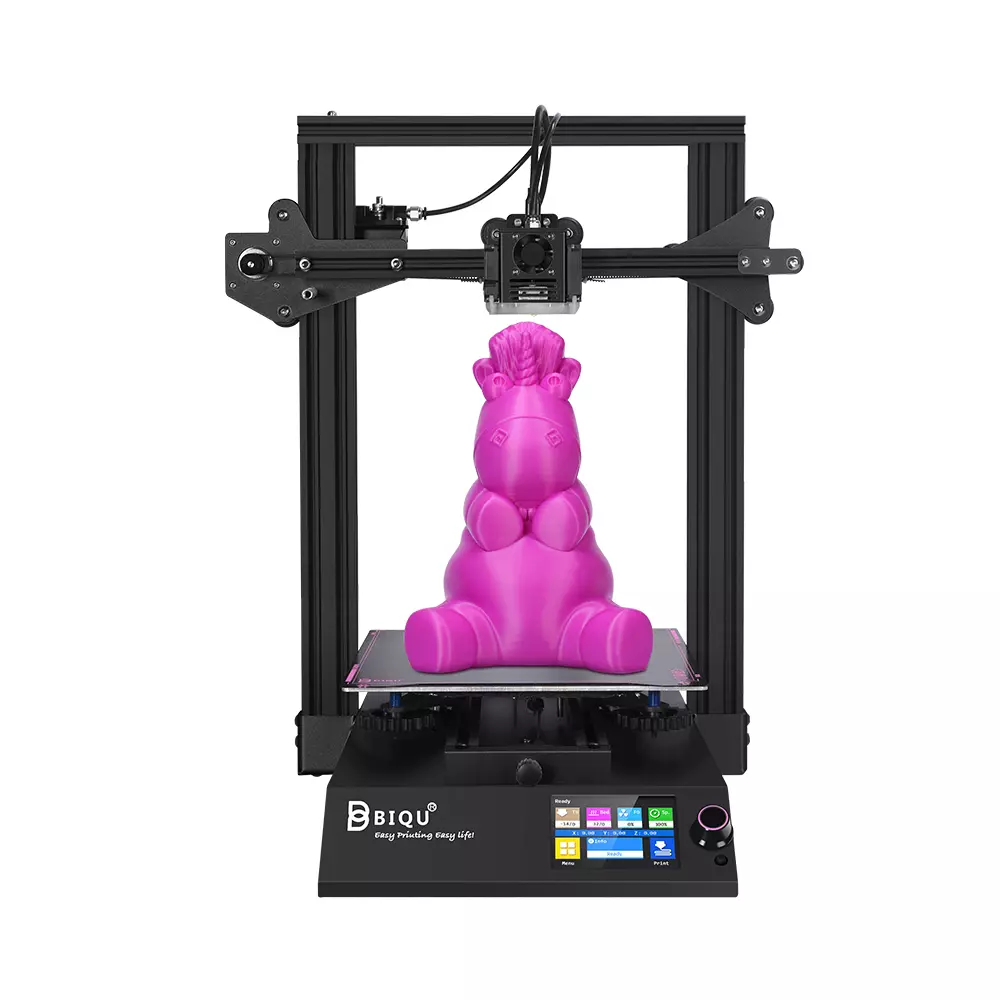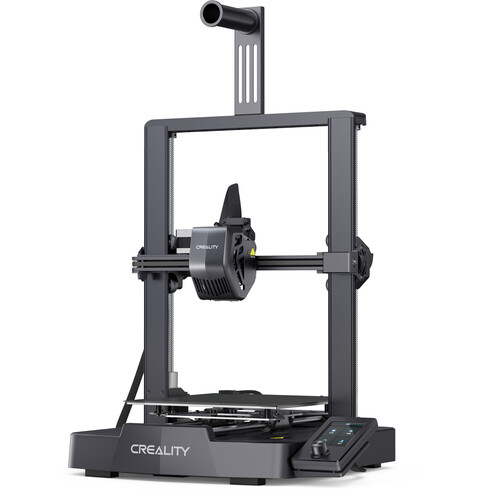Compare BIQU B1 vs Ender 3 V3 SE
Comparison between the best 3D printers
Choose the best 3D printer at the best price. The cheapest 3D printers are here.
Buy a 3D printer here with 3D Fila.
 |
 |
|
| Model | BIQU B1 |
Ender 3 V3 SE[BUY Ender 3 V3 SE] |
| Printing Material | Filament | Filament |
| Buy Filament for BigTreeTech BIQU B1 | Buy Filament forCreality Ender 3 V3 SE | |
| Estimated price | $269,00 | $199,00 |
| Manufacturer | BigTreeTech | Creality |
| Release Year | 2020 | 2023 |
| Print Volume [mm] | 235x235x270 | 220x220x250 |
| Printer Size [mm] | 412x402x492 | 420x366x490 |
| Weight [kg] | 8,00 | 7,34 |
| Power Loss Recovery | YES | NO |
| Enclosed printer | NO | NO |
| Bed Leveling | Manual | Automatic |
| Filament End Sensor | YES | NO |
| Bed type | Heated | Heated |
| Power supply system | Bowden | Direct Drive |
| Standard nozzle | 0,4 | 0,4 |
| Maximum Nozzle Temperature [°C] | 250 | 260 |
| Maximum Bed Temperature [°C] | 100 | 100 |
| Maximum printing speed [mm/s] | 100 | 250 |
| Filament holder | YES | YES |
| Camera for supervision | NO | NO |
| Recommended filaments | PLA, TPU, ABS, PETG | PLA, PETG e TPU (95A+) |
| Recommended slicers | Cura, Simplify, Slic3r | Creality Print, Cura 5.0 ou superior, Prusa Slicer, Orca |
| Maximum Resolution [mm] | 0,1 | 0,1 |
| Processor | 32 Bits BTT SKR V 1.4 | 32-bit Silenciosa |
| Display | Touchscreen TFT 3,5'' | 3,2'' + Knob |
| Power Supply | 24V / 360W | 350 W |
| Connectivity | SD / USB | SD |
| Operating systems | Windows, Mac, Linux | Windows, Linux, Macbook |
| Date of registration in the system | 2021-04-14 | 2024-03-06 |
| Release date | 2020 | 2023 |
| Extra features | The BIQU B1 is an advanced 3D printer with a silent 32-bit BTT SKR V1.4 motherboard and ARM Cortex-M3 CPU, offering DIY interfaces (I2C, SPI, WiFi) and dual Z-axis. Its dual BTT B1 TFT35 V3.0 operating system allows real-time monitoring and multiple printing modes, including G-code visualization effects. It stands out for its BIQU SSS (Super Spring Steel), ensuring easy model adhesion and simplified removal, with the possibility of using it on both sides. It includes a filament sensor, automatically pausing printing in case of filament breakage. The multicolored RGB lights integrated into the hotend allow you to view the printing status even at night. Additional notes include the need for a BIQU-specific Type-C cable and extra interfaces for smart filament sensor and BL Touch. | The Ender 3 V3 SE stands out for its easy assembly, excellent automatic bed leveling, direct extrusion and easy interface, ideal for beginners. Although it uses a coated PC board, it offers robust performance, with print speeds of up to 250mm/s, thanks to a solid construction and linear rods on the Y axis. It lacks Wi-Fi, preferring file transfer via SD card. |
| Support for multiple colors and materials (AMS and CFS) | NO | NO |
Notes * |
||
| Cost-benefit | 7 / 10 | 7 / 10 |
| Hardware | 2 / 10 | 0.7 / 10 |
| Tela | . | . |
| Print volume | 3 / 10 | 3 / 10 |
| Performance | 1 / 10 | 2 / 10 |
| [BUY Ender 3 V3 SE] |
Conclusion |
| In evaluating the BIQU B1 and the Ender 3 V3 SE, each printer has its unique strengths and characteristics that cater to different user preferences and budgets. The **BIQU B1** presents a solid option for more experienced users, thanks to its advanced features such as power loss recovery, a filament sensor for interruptions, and a sophisticated 32-bit motherboard. Although it requires manual bed leveling, it offers a larger print volume and is equipped with notable extras that enhance usability, such as an easy-to-remove spring steel bed and customizable connectivity options. Its pricing reflects these advancements, making it a worthy investment for those seeking a feature-rich printer. On the other hand, the **Ender 3 V3 SE** is positioned as an excellent entry-level printer. Its automatic bed leveling feature simplifies the setup process for novice users, while the solid construction supports considerable printing speeds. Although it lacks some of the advanced features found in the BIQU B1, it remains a reliable machine for common 3D printing tasks at a lower initial cost. The Ender 3 V3 SE excels in ease of use, making it ideal for those just starting in the world of 3D printing. In conclusion, the decision between the BIQU B1 and the Ender 3 V3 SE ultimately hinges on your experience level and specific needs. If you prefer advanced capabilities and can invest a bit more, the BIQU B1 is likely the right choice. Conversely, for beginners or those on a tighter budget, the Ender 3 V3 SE offers great functionality at a more approachable price point, providing an excellent balance of performance and value. |

